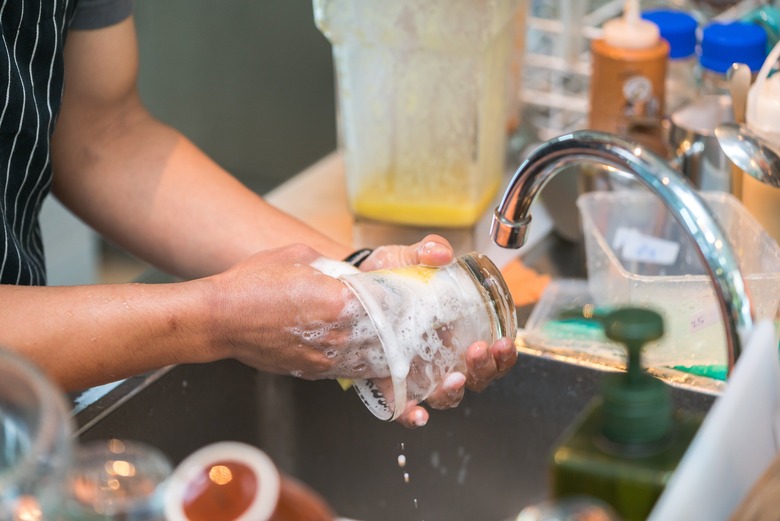The Way You Wash Your Dishes Might Make You Sick
If your life is absent of a dishwasher — condolences. But even if your kitchen has been blessed by one these wonderful, labor-saving pieces of technology it's almost impossible to completely avoid washing some dishes by hand.
Click here for 7 Pieces of Common Cookware That Can Make Your Food Toxic
For that, most of us use our trusty sponge, but unfortunately, this simple tool may be one of the dirtiest things in your kitchen. When a sponge is used to wipe off excess pasta sauce, scrambled egg grime, or a chicken-coated cutting board, it absorbs and preserves any bacteria present on the dishes. When cleaning a surface used to prepare raw meat, the sponge potentially picks up dangerous strains of bacteria like salmonella, which thrives in damp, moist crevices. Another notorious bacterium — Escherichia coli (more commonly known as E. coli) — is more prevalent in household sinks than on toilet seats, according to a University of Arizona study. Washing dishes by hand can therefore increase the risk of spreading or contracting these germs.
Since your sink and sponge house a multitude of microorganisms, it's important to learn the best dish-washing practices. The United States Department of Agriculture tested four different methods and found that either microwaving a sponge for one minute or running it through the dishwasher killed 99.999 percent of bacteria. To thoroughly clean a sink, every night after doing dishes, spray some distilled vinegar around the sink and scrub vigorously with a baking soda-topped brush.
